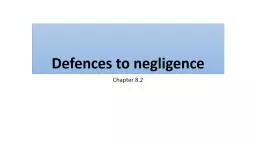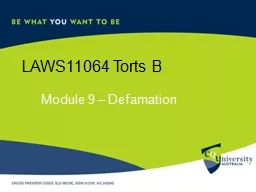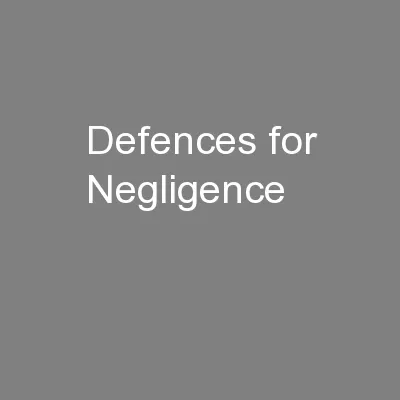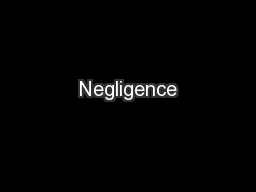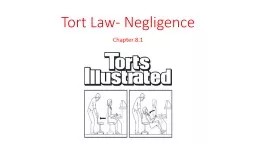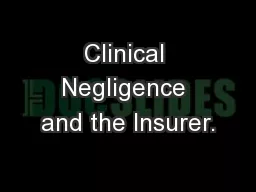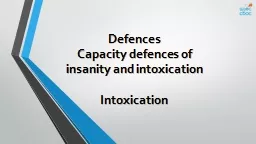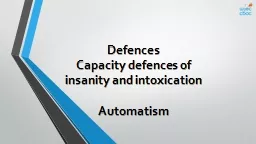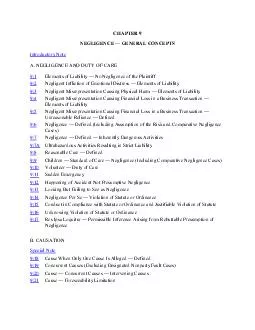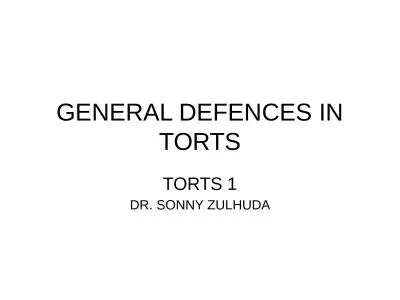PPT-Defences for Negligence Defences for Negligence
Author : tatyana-admore | Published Date : 2018-09-30
The best defence is Negligence did not exist or the defendant didnt owe the plaintiff a duty of care Duty of Care a specific legal obligation to not harm other
Presentation Embed Code
Download Presentation
Download Presentation The PPT/PDF document "Defences for Negligence Defences for Neg..." is the property of its rightful owner. Permission is granted to download and print the materials on this website for personal, non-commercial use only, and to display it on your personal computer provided you do not modify the materials and that you retain all copyright notices contained in the materials. By downloading content from our website, you accept the terms of this agreement.
Defences for Negligence Defences for Negligence: Transcript
Download Rules Of Document
"Defences for Negligence Defences for Negligence"The content belongs to its owner. You may download and print it for personal use, without modification, and keep all copyright notices. By downloading, you agree to these terms.
Related Documents


